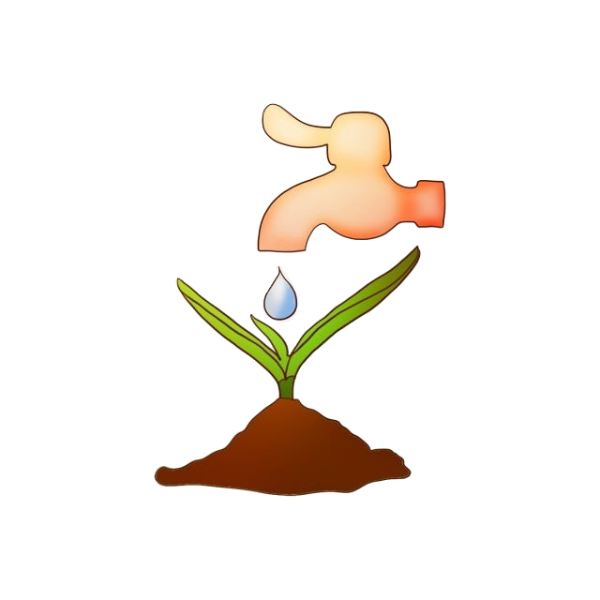Abstract
The incipient moisture content-commonly known as the permanent wilting point-represents a critical threshold in soil hydrology and geotechnical engineering. It defines the minimal moisture level at which soil can sustain plant life, beyond which water becomes unavailable due to capillary forces and diminished matric potential. This threshold profoundly influences key soil behaviors, including permeability, infiltration capacity, and shear strength. At moisture levels near this point, soils exhibit low permeability, limited compaction response, and reduced cohesion, directly impacting their structural stability and suitability for engineering applications. Microstructurally, minimal water content limits particle lubrication, increasing internal friction and altering compaction dynamics. A thorough understanding of the incipient moisture content is essential for agricultural irrigation planning, foundation design, and environmental management. Recognizing its role in soil mechanics enables more effective decision-making in both civil and environmental engineering contexts.
Keywords Incipient moisture content ⚫ Permanent wilting point⚫ Soil hydrology⚫ Geotechnical engineering ⚫ Matric potential ⚫ Capillary forces ⚫ Permeability ⚫ Infiltration capacity ⚫ Shear strength ⚫ Compaction dynamics ⚫ Structural stability ⚫ Particle lubrication ⚫ Irrigation planning ⚫ Foundation design ⚫ Environmental management
1. Introduction
Soil’s hydrological behavior-encompassing permeability, infiltration capacity, and moisture retention—is intricately linked to its moisture content. The incipient moisture content, often referred to as the point of incipient wilting or the permanent wilting point, marks the threshold below which plants can no longer extract water effectively. This moisture content is pivotal in understanding soil’s engineering and hydrological properties, especially in unsaturated conditions.
2. Incipient Moisture Content: Definition and Significance
The incipient moisture content is the minimal water content at which soil can still support plant life. Below this threshold, water becomes increasingly unavailable due to capillary forces and reduced matric potential. This point is crucial for determining the soil’s water retention capacity and its behavior under varying moisture conditions.
3. Influence on Soil’s Engineering Properties
3.1. Shear Strength
The shear strength of soil, a critical parameter in geotechnical engineering, is significantly affected by moisture content. As moisture content increases beyond the incipient point, the soil’s cohesion decreases due to the dilution of cementing agents and the reduction in matric suction. This leads to a decrease in shear strength. For instance, studies have shown that in silty clay, as moisture content increases from 10% to 22%, shear strength decreases substantially, with cohesion and internal friction angle both declining.
3.2. Permeability and Infiltration Capacity
Soil permeability is influenced by the moisture content, especially near the incipient moisture level. At this point, the soil’s pore structure is such that water movement is minimal, leading to low permeability. However, as moisture content increases, the soil structure may become more conducive to water movement, altering its permeability and infiltration characteristics.
3.3. Compaction and Compressibility
Compaction efforts are influenced by the soil’s moisture content. At the incipient moisture content, the soil may not respond effectively to compaction efforts due to its low plasticity and cohesion. This can lead to higher compressibility and potential issues in construction applications.
4. Microstructural Considerations
At moisture contents near the incipient point, the soil’s microstructure is characterized by minimal water between particles, leading to reduced lubrication and increased friction. This structure influences the soil’s overall hydrological and engineering properties, including its response to compaction and its ability to retain and transmit water.
5. Practical Implications
Understanding the influence of incipient moisture content on soil properties is essential for various engineering applications:
• Agriculture: Determining optimal irrigation schedules and understanding plant water availability.
• Construction: Assessing soil suitability for foundations and predicting settlement behavior.
• Environmental Management: Managing water resources and understanding soil erosion dynamics.
6. Conclusion
The incipient moisture content serves as a critical threshold in determining soil’s engineering and hydrological properties. Recognizing its influence allows for better soil management and informed decision- making in engineering practices.
References
1. Kang, Y., et al. (2022). Study on the Effect of Moisture Content and Dry Density on Shear Strength of Silty Clay Based on Direct Shear Test. Advances in Civil Engineering, Article 2213363. https://doi.org/10.1155/2022/2213363
2. Yin, C., et al. (2018). Effects of Initial Water Content on Microstructure and Mechanical Properties of Lean Clay Soil Stabilized by Compound Calcium-Based Stabilizer. Materials (Basel).
3. Zhang, L., et al. (2023). Effects of compaction moisture content on the shear strength of an unsaturated clay. Geotechnical and Geological Engineering.
4. Zhang, X., et al. (2023). Effect of Moisture Content and Wet-Dry Cycles on the Strength Properties of Unsaturated Clayey Sand. Building
5. Wang, C., Yang, W., Zhang, N., Wang, S., Ma, C., Wang, M., & Zhang, Z. (2024). Effect of Moisture Content and Wet-Dry Cycles on the Strength Properties of Unsaturated Clayey Sand. Buildings, 14(5), 1375. https://doi.org/10.3390/buildings 14051375
